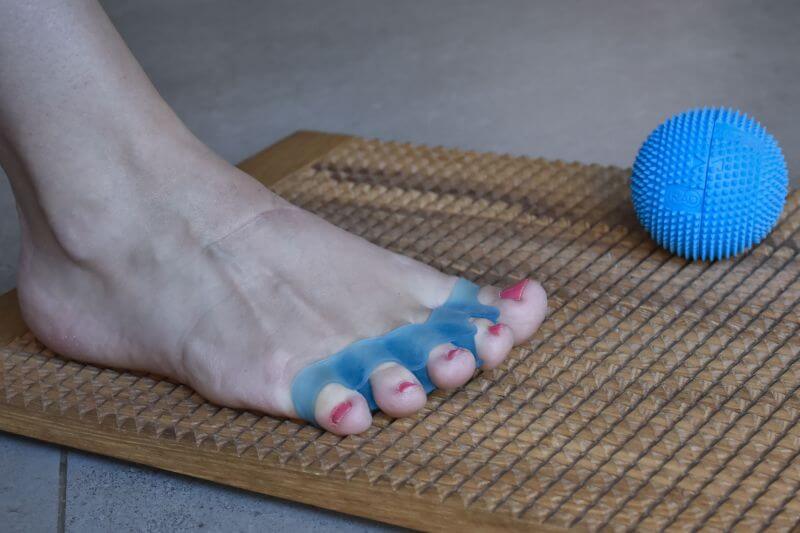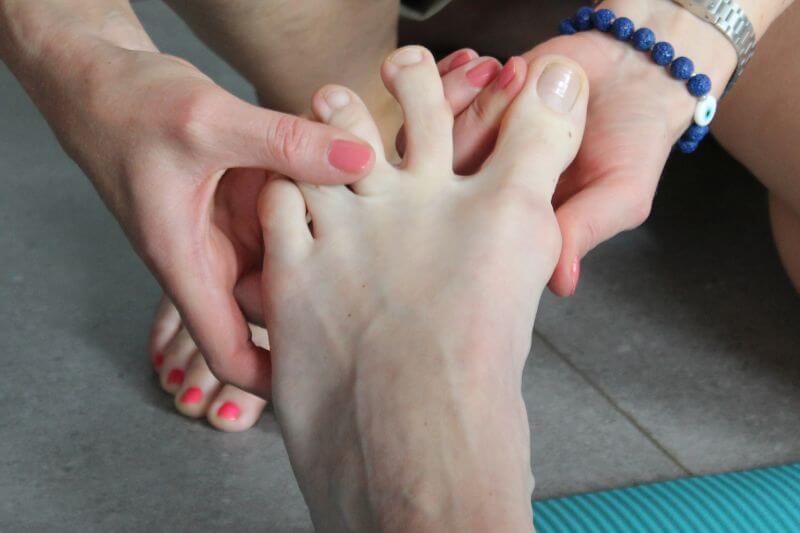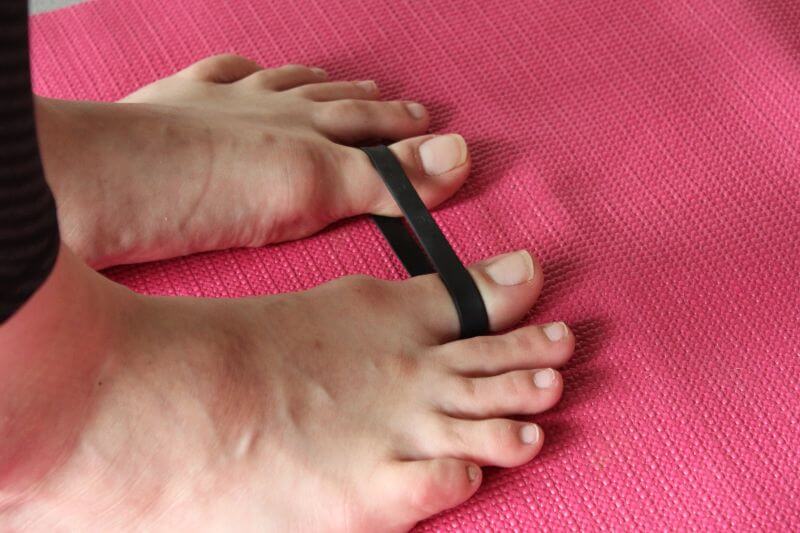Hallux valgus (bunion) affects up to a quarter of the adult population, and even more than a third of seniors. In our Barefoot Academy, we take a closer look at the causes, symptoms and treatment options.
Content of the article
What is hallux valgus?
Hallux valgus, or bunions, is a foot deformity in which the toe deviates from its natural axis inwards and towards the other toes. A characteristic bump often forms at the joint (the head of the first metatarsal), sticking out of the foot and causing pain.

Bunion symptoms
A bunion is easily recognized by looking down at the foot, when the toe does not continue straight in the line of the metatarsal bone, but breaks at an angle towards the other toes. The therapists at Fyzio svět ("Physio World") distinguish four degrees of deviation:
- Stage I - small deviation, first signs of inflammation (redness, swelling, pain)
- Stage II - thumb deviation from the axis into valgus (buckling)
- Stage III - deflection of the ulna head, shortening of the external and lengthening of the internal joint structures
- Stage IV - thumb overlaps index or middle finger, soft tissues markedly shortened
The higher the degree of deformity of the foot, the more pain accompanies the symptoms. At the same time, the range of motion of the big toe decreases and the way of walking changes.
How does hallux affect us?
Hallux valgus is not only an aesthetic defect, but also brings other complications. Active use of the thumb when walking is crucial for proper stride alignment; if the thumb is moved to the side, the foot cannot rest on it or bounce off it sufficiently, the movement pattern changes. Unnatural movement puts more strain on joints, ligaments and muscles, which gradually leads to body pain and deformities.
If you let your thumb continue to deviate from its axis without addressing the problem, it can drive you to surgery. However, this is preceded by pain in the feet, knees, hips, back and other parts of the musculoskeletal system, which early prevention could have prevented. Therefore, pay attention to the slightest discomfort that accompanies wearing ordinary shoes.
How does hallux develop?
Hallux valgus is caused by internal causes (genetics, different lengths of the metatarsal bones, hypermobility, ...) and external causes (inappropriate footwear, obesity, prolonged stress, injury, ...). It is much more common for women, due to the wearing of high-heeled shoes, or even pregnancy (when the ligaments in the body loosen), while men suffer from fashionable pointed-toe shoes.
Hallux prevention
The most commonly recommended methods of hallux prevention are:
- Wearing appropriate footwear
- Exercise
- Finger yoga
- Barefoot walking
- Stimulation of the sole of the foot
- Massage
- Using toe spacers
- Taping
- Orthotic insoles
- Weight reduction
These methods help to correct the initial stage of the bunion, while at more advanced levels they serve to relieve the pain rather than fully cure the hallux.

Which shoes for hallux?
"A good shoe is wide enough so that all your toes can rest in it. It should also have a pliable sole that allows the foot to adapt to the surface. Simply, In a comfortable shoe, you shouldn't feel any pressure when you walk," advises physiotherapist Daniela Gregová. "In my opinion, if you walk off-road a lot (and have sufficiently strong ligaments), proper barefoot shoes are suitable for you. However, if you are hypermobile, walk most of the time in the city and your foot or toe is sore, in that case I would rather recommend another solution," she adds.
Hallux treatment
Conservative treatment of bunions includes:
- Detailed medical examination and identification of hallux-causing factors
- A program of recommended treatments (may include shock waves, laser, taping, ...)
- Proper exercise and stretching lessons
- Following the above-mentioned rules of prevention

More advanced stages need to be discussed with orthopaedic surgeons and possibly proceed to surgery. This usually involves breaking through the bones and securing the correct position with screws. Recovery from surgery takes about 6 to 8 weeks, with patients using crutches to relieve the limb. Physiotherapy is also important here to return desired function to the foot, however, stiffness or limited joint mobility may persist for some patients.
Bunion exercise
From our supplier of adjustable socks Pro-nozky, we share tips for exercising your feet:
- Thumb release: Sit down, grasp the thumb and perform wiggling or wringing of the thumb in different directions for 5-10 minutes.
- Heel and toe release: Grasp the heel with one hand and the instep with the other and stretch the foot away from you. Then pull the toes apart slightly and bend down. You can also use a massage ball.
- Pulling the thumb away from the other toes: After relaxing and stretching beforehand, sit on a chair with the foot on the floor and move the thumb away from the other toes. Adjust your thumb with your hands to the correct position if needed. When you master it, try standing, at least 5 minutes a day.
- Activating the transverse arch: Spread the foot to three points (the toe, mallet and heel joint) and try to narrow the foot at the point of the transverse arch (arching the arch under the toes, taking it off the ground in the middle) while maintaining support in the mallet and thumb. Be careful not to twist your knees, practice at least 5 minutes a day.
- Toe extensor stretch: Hook a rubber band (rubber bracelet) behind the toes of both feet and slide the feet apart to pull the toes away from the rest of the toes. Stay in the gentle stretch position for at least 30 seconds.
- Active bounce while walking: While walking, concentrate on actively engaging the thumb in the bounce. Exercise barefoot until the movement becomes automatic.
- Walking barefoot: Walk barefoot on different surfaces and in different temperatures for general foot strengthening.

